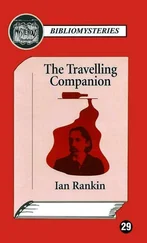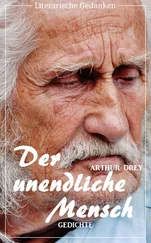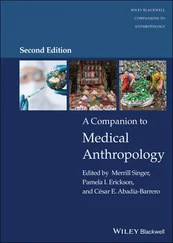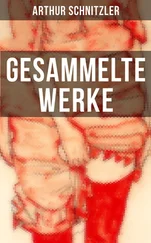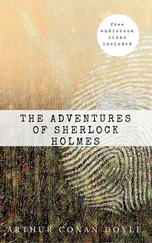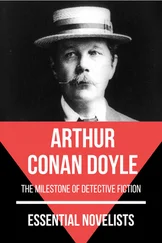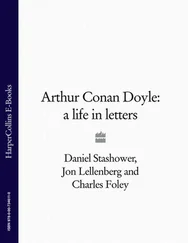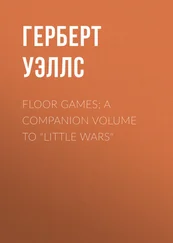A Companion to Arthur C. Danto
Здесь есть возможность читать онлайн «A Companion to Arthur C. Danto» — ознакомительный отрывок электронной книги совершенно бесплатно, а после прочтения отрывка купить полную версию. В некоторых случаях можно слушать аудио, скачать через торрент в формате fb2 и присутствует краткое содержание. Жанр: unrecognised, на английском языке. Описание произведения, (предисловие) а так же отзывы посетителей доступны на портале библиотеки ЛибКат.
- Название:A Companion to Arthur C. Danto
- Автор:
- Жанр:
- Год:неизвестен
- ISBN:нет данных
- Рейтинг книги:5 / 5. Голосов: 1
-
Избранное:Добавить в избранное
- Отзывы:
-
Ваша оценка:
- 100
- 1
- 2
- 3
- 4
- 5
A Companion to Arthur C. Danto: краткое содержание, описание и аннотация
Предлагаем к чтению аннотацию, описание, краткое содержание или предисловие (зависит от того, что написал сам автор книги «A Companion to Arthur C. Danto»). Если вы не нашли необходимую информацию о книге — напишите в комментариях, мы постараемся отыскать её.
Companion
A Companion to Arthur C. Danto
A Companion to Arthur C. Danto — читать онлайн ознакомительный отрывок
Ниже представлен текст книги, разбитый по страницам. Система сохранения места последней прочитанной страницы, позволяет с удобством читать онлайн бесплатно книгу «A Companion to Arthur C. Danto», без необходимости каждый раз заново искать на чём Вы остановились. Поставьте закладку, и сможете в любой момент перейти на страницу, на которой закончили чтение.
Интервал:
Закладка:
Great aestheticians often stake new philosophy on the art of their time: Roger Fry on Cézanne, Richard Wollheim on British figurative art, Friedrich Nietzsche on Wagner (till he got burned). Arthur’s double was Warhol. When he published his theory of art in the Journal of Philosophy , no one knew what to do with it, exactly in the way no one knew how to take Brillo Box . Arthur’s thinking was ahead of the game. Utterly dedicated to making a contribution to philosophy, he did so in the manner of an avant-garde artist, riding the curl of history and finding it on the streets of New York. It is not fortuitous that the book he would publish after his work on the art world in 1964 would be Nietzsche as Philosopher , which similarly befuddled the New York philosophical world, a world, which at that time believed Nietzsche a freak if not a Nazi. What followed was an endless litany of works in philosophy and art criticism, each filled with dazzling insight and unforgettable philosophical twists.
When he became a critic for the Nation magazine in 1984 (a post he held until 2009), postmodernism was in high swing; he became its most imaginative theorist. Having completed the project of self-discovery, Arthur believed (in a Hegelian manner) that art history was completed, freeing art to pursue a prism of new possibilities in the manner of a thousand flowers blooming. This was, in fact, what was happening in the New York art world, where the intense anxieties of the art historical movement (whose military quarters were the Cedar Bar) were giving way to a kind of populist individualism with each artist free to experiment with any style for any reason, composing paintings in which German expressionism meets Italian Mannerism, Abstraction reacquaints itself with the human figure and Duchamp turns into a TV serial. This efflorescence was tailor-made for Arthur’s abundant generosity; he could be free to like everything or at least find everything fascinating. Not that he was without complaint. In an essay in The Nation called “The Painting of Importance,” Arthur bemoaned the new high seriousness whose point seemed to be to make a work of art seem important rather than be it by carrying the aura of deep meaning and struggle with form while in fact bespeaking no message at all other than size and a lot of scratching on the surface and a deep title taken from the Second World War. Certain bad boy artists of the 1980s he chided as adolescents, the kind who come out of their bedrooms in the American suburbs only to tell their parents to stuff it and return to their television sets (now they would be insulting each other on Facebook). He had the pulse of America just as he had the pulse of art. But he never ceased to be cheerful, for he found each twist in the inscrutable pattern of life a new surprise, giving him something new to think about. The worst thing in life, to twist the words of Warhol, is not having anything to think about.
Arthur’s big mind was a generous one. He welcomed serious thought from all quarters, whether it criticized him or not. I had in 1992 submitted a book for publication that criticized parts of his work, and when he read the manuscript, he wrote to me: “Rather than duking it out, what can I do to help you get this book published.” Two years later, I was coming out of a shop somewhere on the Eastside when I ran into him hurrying to a lecture. His warmth was unmistakable. Not ten seconds after he greeted me, an artist who had been living in Italy sauntered by and was bear-hugged. Arthur immediately introduced this man to me, at which point a third stopped to pay respects, and Arthur said, “Three wonderful people on one day.” When we were seated at the same table with a famous Indian artist after an exhibition at New York University in 1985, the artist went on about painting a canvas ninety-six yards long. “Couldn’t you make it a hundred?” Arthur asked, with dry cheerfulness.
It is not often that a philosopher can achieve a central role in the precipitation of culture and in the most cosmopolitan way. It is not often that a philosopher can move effortlessly through various genres of writing, and with such suave, effervescent prose, prose that inevitably finds a philosophical twist to art, and an art to the way philosophy can be imagined. It is less often still that such a person can be loved, really loved by so many. Arthur was what the Greeks call “great-hearted.” He filled the room while leaving ample space for others. The room is bare without him.

Figure 2Reproduced with permission of Lydia Goehr.
Remembering Arthur Danto
Fred Rush
I came to Columbia for graduate work in philosophy in 1989. My plan – if one could call it that – was to concentrate on the areas of ancient philosophy, German philosophy, and the philosophy of art. The last bit, the philosophy of art, was something I was unsure about. I had pursued a musical career with some seriousness after college, and my undergraduate course in philosophy had concentrated on what was at the time the central concern in analytic philosophy, the philosophy of language. It would not have occurred to me to connect contemporary philosophy with art. Philosophy and art were utterly distinct for me; I would not have wanted to sully one with the other.
The degree to which I was open to the philosophy of art was due to having picked up, pretty much at random, a copy of Arthur Danto’s Transfiguration of the Commonplace from a bookstore in Atlanta. What commenced as a cautious, half-hearted read developed into an avid one, and I saw for the first time how one might do something exciting and innovative in aesthetics. Still, I did not arrive in New York entirely convinced. I did not meet Arthur until my second year in graduate school. He taught a seminar called, I believe, simply Topics in Aesthetics, which I discovered, in practice, meant “read a book with Professor Danto.” The course consisted entirely of discussing the philosophical issues raised by a book (of Arthur’s choosing) and writing up a paper on some topic covered. I do not remember what book we read that term. I have retained an impression that it was not very good, but that didn’t matter because what I found out was that the book was just a prop for Arthur to discuss his own views. That was much more exciting, of course! Arthur was what Harold Bloom calls a “strong reader,” and his somewhat impetuous and even impertinent style was a chance, in essence, to talk with Arthur about Arthur – about his work. He held forth, seamlessly integrating great chunks of his own aesthetics with both historical views and real-world examples from the visual arts against which one might test the theory. I remember writing a too-long paper on the connection of semantics and ontology in Arthur’s view as I understood it. I hesitated to turn it in. It contained a number of objections, which I thought he might take to be snotty and superficial. The paper, in fact, was the model of politeness, but I thought that he might not like being objected to (as some philosophers do not) and especially not if the source of the objection was a puny graduate student. So, I showed the paper to Sidney Morgenbesser, with whom I had worked a fair amount, and he thought it was OK. So I turned it in and held my breath. As it turned out, Arthur thought they were pretty good objections to some theory, just not to his theory. This was a jovial result for him; he thought it a good effort on my part but that I had misunderstood his views at what he took to be a crucial turn in the argument.
Читать дальшеИнтервал:
Закладка:
Похожие книги на «A Companion to Arthur C. Danto»
Представляем Вашему вниманию похожие книги на «A Companion to Arthur C. Danto» списком для выбора. Мы отобрали схожую по названию и смыслу литературу в надежде предоставить читателям больше вариантов отыскать новые, интересные, ещё непрочитанные произведения.
Обсуждение, отзывы о книге «A Companion to Arthur C. Danto» и просто собственные мнения читателей. Оставьте ваши комментарии, напишите, что Вы думаете о произведении, его смысле или главных героях. Укажите что конкретно понравилось, а что нет, и почему Вы так считаете.

